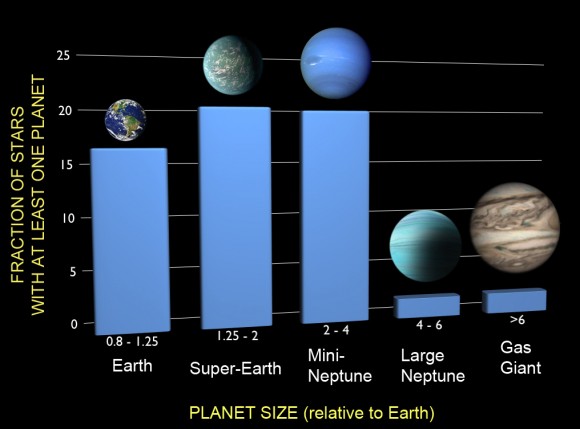

| Visitors Now: | |
| Total Visits: | |
| Total Stories: |

| Story Views | |
| Now: | |
| Last Hour: | |
| Last 24 Hours: | |
| Total: | |
Nearly All Sun-Like Stars Have Planetary Systems

A new analysis examined the frequencies of planets of different sizes based on findings from NASA’s Kepler spacecraft, correcting for both incompleteness and false positives. The results show that one in six stars has an Earth-sized planet in a tight orbit. Credit: F. Fressin (CfA)
The latest analysis of data from the Kepler planet-hunting spacecraft reveals that almost all stars have planets, and about 17 percent of stars have an Earth-sized planet in an orbit closer than Mercury. Since the Milky Way has about 100 billion stars, there are at least 17 billion Earth-sized worlds out there, according to Francois Fressin of the Harvard-Smithsonian Center for Astrophysics (CfA), who presented new findings today in a press conference at the American Astronomical Society meeting in Long Beach, California. Moreover, he said, almost all Sun-like stars have planetary systems.
(…)
Read the rest of Nearly All Sun-Like Stars Have Planetary Systems (500 words)
© nancy for Universe Today, 2013. | Permalink | No comment |
Post tags: exoplanets, Extrasolar Planets, Kepler mission
Feed enhanced by Better Feed from Ozh
2013-01-07 14:00:59
Source: http://www.universetoday.com/99309/nearly-all-sun-like-stars-have-planetary-systems/
Source:


